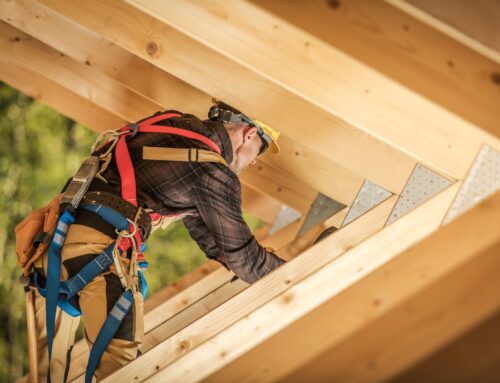Using contractors is a cost-effective way to secure vital services. But it can create huge safety problems – especially when contractor personnel work at your facility. Maintaining a safe and healthy workplace for your own people is tough enough. It’s a real challenge when your workplace is swarming with unfamiliar workers. This can be a recipe for injuries and liability.
To control these risks you need to know at any given time which contractors are on your site and whether their safety training meets your expectations.
Company Blamed for Subcontractor’s Injury
Here’s a true story that shows what can happen when you don’t keep track of the contractors who come to your site:
A manufacturer hired a maintenance contractor to do a service shut down at one of its plants. The contractor planned to house its workers in a 30-foot work trailer and hired a subcontractor to deliver the trailer to the plant site.
The subcontractor sent an 18-year-old student with little or no experience or training to deliver the trailer. When he got to the plant site, the driver parked the trailer near a leaky storage tank, stepped out and walked into a puddle of caustic soda mixed with melted snow. He suffered second and third degree burns on his feet and couldn’t work for over a year.
The plant had an active safety program and provided training to its contractors. But the service contractor in this case never bothered to tell the plant’s safety manager about the trailer arrangement with the subcontractor. Thus the safety manager didn’t know that the trailer was coming or who would deliver it. When the driver got hurt, nobody at the plant (other than the contractor) had any idea who he was or what he was doing there. So there wasn’t much the plant could do to protect him.
Even so, the plant ended up having to pay the driver’s workers’ compensation claim costs. OSHA also charged both the plant and the contractor with not taking every precaution reasonable to protect the driver, and imposed substantial fines.
Reasons to Keep Tabs on Contractors
There are 2 good reasons to keep track of the contractors who come to your site:
-
Contractors Are Especially Vulnerable
Contractor personnel are unfamiliar with your machinery and work processes. You don’t get to train them the way you do your own workers. They don’t know their way around your site. They’re apt to inadvertently work on energized equipment, improperly enter confined spaces or otherwise get into trouble. In short, they’re especially vulnerable to accidents and need protection.
-
Contractors Can Put Your Own Workers at Risk
Having a contractor’s workers on your site can compromise your safety program and put your own workers at risk. For example, contract workers who aren’t familiar with your safety systems may inadvertently shut off or disable key controls or start up processes or equipment. Workers unfamiliar with your workplace or process may accidentally cause a leak or spill or even start a fire or explosion. Since you don’t hire them, you don’t know if they’re properly trained and safety conscious. And as if all this wasn’t bad enough, as shown in the story above, contractors may bring their own subcontractors right into your workplace without your knowledge.
Monitoring Contractor Workers
One of the keys to managing contractor risks is to know at any given time which contractors are at your site and what kind of work they’re doing. This might sound obvious but it’s often overlooked. This is particularly true at companies that have a large workforce and a workplace spread out over a large physical area.
An innovative and effective measure used by leading companies to monitor the whereabouts of contractors’ workers involves creating a special form called an outside contractor notification form.
How to Create the Form
The contractor notification form is a one-page checklist of key information about each contractor the company is working with. Although you don’t need to use the exact same model as the one above, you should make sure that your version lists all the information necessary to track the contractor, like:
- The contractor’s name;
- The name of a designated supervisor or other person from your site who’s responsible for the contractor while it’s on site (and for filling out the form);
- The supervisor from the contractor’s staff in charge of the contractor’s workers on site (and who serves as your contact person at the site);
- Whether the contractor has met the requirements of your safety program;
- How many workers are on site;
- Whether those workers have been oriented to your safety program;
- The names of any subcontractors to be used;
- A brief description of the work to be done; and
- The start and finish date of the work.
Conclusion
To manage contractor risks, companies must take measures ranging from contractor selection to orientation and oversight of contract work. Monitoring the comings-and-goings of contractor personnel is just one part of the process. But while it won’t solve all of your problems, monitoring contractor whereabouts is integral to the success of a company’s risk management efforts.






